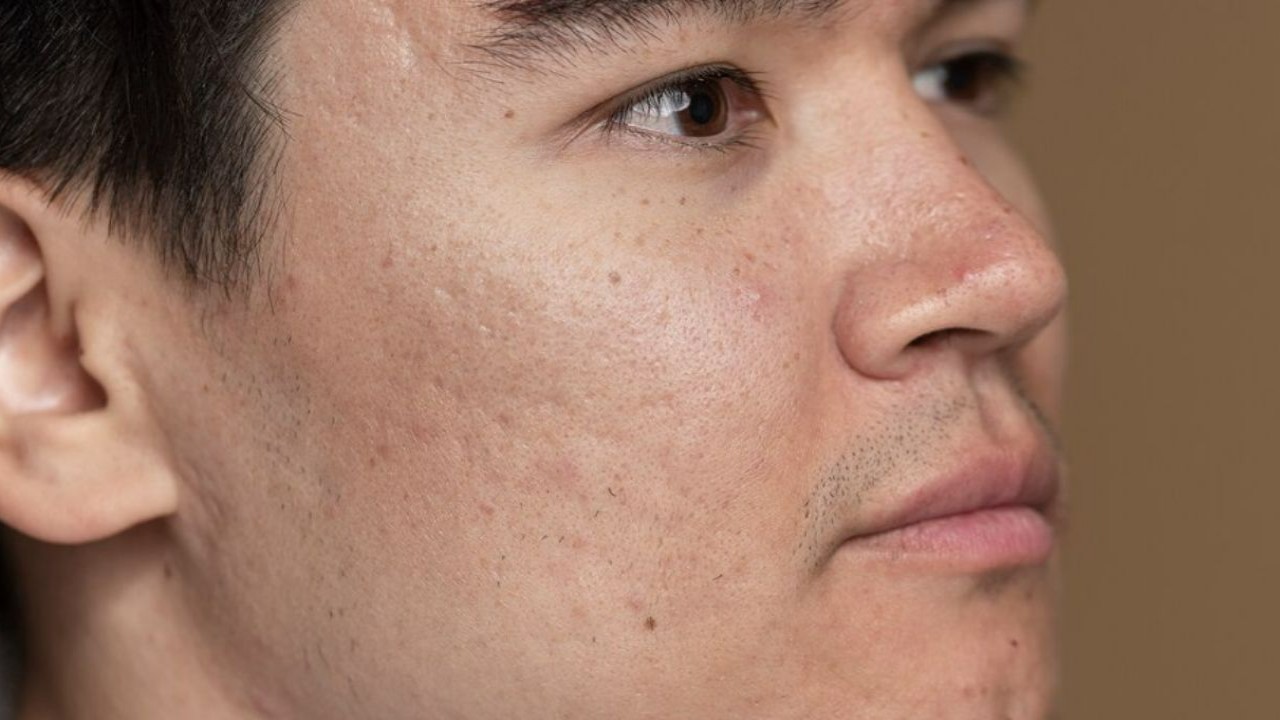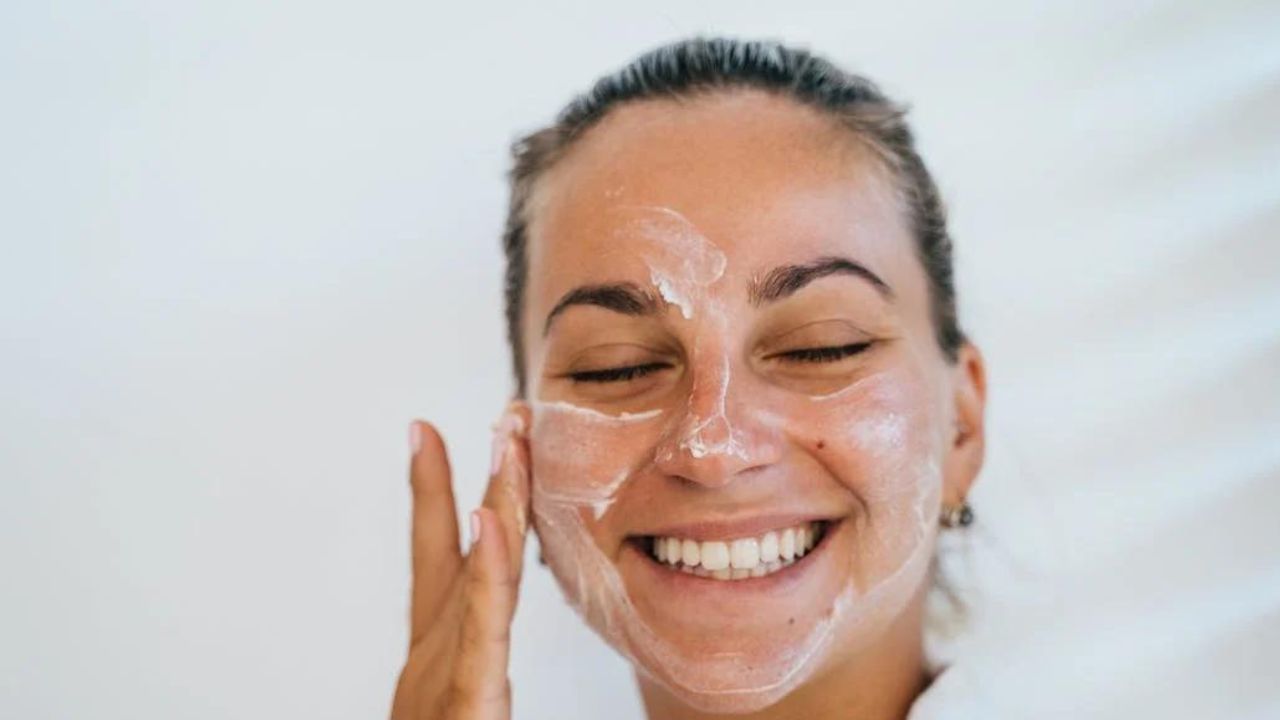How to Get Rid of Ice Pick Scars: Causes, Prevention, And Treatment
Dealing with ice-pick scars? Discover expert tips on how to get rid of ice pick scars to improve skin texture and reduce scars for achieving smooth, glass skin.

When you pop or pick at pimples, they can leave behind stubborn marks known as ice-pick scars. These deep indentations go down into the dermal layer of your skin and can be tricky to tackle. But don't worry! In our article, we’ve got the scoop on how to get rid of ice pick scars and minimize their appearance.
If you want to learn how to deal with ice-pick scars and get smoother, healthier skin, keep reading. We’ll share simple solutions and tips to help you improve your skin. Scroll down to find the best treatments that can make a real difference for you!
What Are Ice Pick Scars, And How Do They Develop?

Ice pick scars are those small, deep pits that can appear on your skin, making it look like it's been pricked with a needle or a sharp object. They often result from severe acne, particularly cystic acne, which causes intense inflammation deep in the skin.
When your skin tries to heal from this type of acne, it can sometimes lose tissue in the process. When the skin doesn’t generate much collagen during healing, these narrow, deep scars are left behind. It's like the skin couldn't fill in the gap, which leaves a noticeable mark.
Types of Atrophic Acne Scars
These scars are characterized by a loss of tissue and appear as depressed areas on the skin. They can be categorized into three main types:
Ice Pick Scars: Ice pick scars are one of the three types of atrophic scars, characterized by deep, narrow depressions that resemble puncture marks. These scars, along with boxcar and rolling scars, result from a loss of tissue.
Boxcar Scars: Round or oval indentations that are shallow and wide, which makes them more visible on the skin. Boxcar scars result from significant tissue loss and can create a rugged texture on the skin's surface.
Rolling Scars: Rolling scars are wavy, uneven depressions on the skin, giving it a rolling appearance. These scars are usually shallow but can cause the skin to look uneven and bumpy. The rolling effect is caused by bands of scar tissue that pull at the skin’s surface.
Treatments for atrophic scars often involve resurfacing procedures like laser therapy or chemical peels, as well as dermal fillers to restore volume. Glycolic acid and other chemical exfoliants can help smooth the skin’s texture. In some cases, a punch tool or surgical procedure might be used to excise the scar tissue.
2. Hypertrophic And Keloid Scars: These scars are raised and occur due to excessive collagen production during the wound-healing process. Hypertrophic scars are generally confined to the original injury site, while keloid scars extend beyond the boundary of the wound. Treatments may include corticosteroid injections, silicone gel sheets, or cryotherapy.
3. Inflammatory Acne Scars: Resulting from severe acne lesions, these scars may be both atrophic and hypertrophic. Effective treatment involves addressing the underlying inflammatory acne with a combination of prescriptions, including topical or oral medications. Resurfacing procedures and other cosmetic treatments can also help in improving the appearance of the scars.
For all types of acne scars, consulting with a board-certified dermatologist and an expert dermatology team is crucial to determine the most suitable treatment options. These may include a combination of resurfacing procedures, dermal fillers, and tailored skincare regimens to achieve smoother, healthier skin.
What Causes Ice Pick Scars?
With deep, narrow depressions, they can be frustrating and difficult to manage due to their distinct appearance, which resembles small, deep pits. These scars form primarily as a result of severe acne, particularly cystic acne. Cystic acne occurs when oil, bacteria, and dead skin cells become trapped in the pores, leading to inflammation and infection deep within the skin (1).

When the body responds to this deep-seated inflammation, it often leads to the destruction of skin tissue. During the healing process, the body may not produce enough collagen to completely repair the damaged area. As a result, ice pick scars form because the skin is unable to fill in the deep tissue loss, leaving a noticeable indentation (2).
Factors like genetics, skin type, and the severity of the acne can influence the likelihood of developing these scars. Individuals with a family history of severe acne or scarring may be more prone to ice pick scars. Additionally, picking or squeezing acne lesions can worsen inflammation and increase the risk of scarring. Preventing acne through proper skincare and seeking early treatment for severe breakouts can help minimize the formation of these scars.
How to Get Rid of Ice Pick Scars?
Ice pick scars can be challenging to treat due to their depth and narrowness, but several effective options can help improve their appearance. Here’s a closer look at each method:
1. Chemical Peels: These face peels use acids like glycolic or salicylic acid to exfoliate the skin deeply, encouraging new skin growth and reducing the appearance of scars. They’re like hitting a reset button on your skin. While mild peels can be done at home, deeper peels should be performed by a professional for best results.

2. Microdermabrasion: This non-invasive procedure gently sands your skin, removing the thicker, uneven outer layer. It's similar to exfoliating but more intense, and it can help with superficial scars. Think of it as polishing your skin to reveal a smoother surface.
3. Radiofrequency (RF) Therapy: RF therapy uses heat to stimulate collagen production deep within the skin. It’s a gentle treatment that gradually tightens and lifts the skin, reducing scar depth. Imagine it as a workout for your skin, encouraging it to firm up and smooth out.
4. Punch Excision: This surgical method involves cutting out individual scars and stitching the skin back together. It's particularly effective for deep ice pick scars. Picture it like removing a small stain from a fabric — precise and targeted.
5. Collagen Induction Therapy: Also known as microneedling, this technique uses tiny needles to create micro-injuries in the skin, stimulating collagen production and improving texture. It’s like aerating your lawn to make it healthier and fuller.

6. Accutane (Isotretinoin): While primarily used for treating severe acne, Accutane can prevent further scarring by significantly reducing acne. It’s like stopping a leak before it causes more damage.
Read More: Does Accutane Cause Hair Loss: Understanding the Risks in Depth
7. Laser Resurfacing: Lasers remove the outer layers of skin or stimulate collagen production. Think of it as a high-tech eraser that smooths out the surface and promotes new skin growth. Ablative lasers are more intense, while non-ablative lasers require less downtime.
8. Punch Grafting: Similar to punch excision, this involves removing the scar and filling the area with a small skin graft. It’s akin to patching a hole in a wall to create a smooth finish.
9. Hyaluronic Acid Injections: These injections temporarily fill in scars, plumping them up to be level with the surrounding skin (3). It’s like using a filler to even out the surface, though the effects are temporary and need maintenance.
10. TCA CROSS (Trichloroacetic Acid Chemical Reconstruction of Skin Scars): This involves applying a strong acid to each scar, stimulating collagen production, and improving their appearance. Think of it as targeted chemical encouragement for your skin to rebuild itself.
11. Microneedling: Microneedling is another term for collagen induction therapy, where tiny needles puncture the skin to encourage healing and collagen production. Though many people seem sensitive to the idea of teeny-tiny needles poking at your face and cheeks, this can be a good way of efficiently smoothing skin.

Choosing the right treatment depends on the severity of your ice-pick scars and your skin type. Our best advice at hand would be to consult with a dermatologist who can help you decide on the best approach for your skin, combining multiple treatments for optimal results.
How to Prevent Ice Pick Scars?
1. Treat Acne Early And Effectively
Addressing acne promptly can reduce the risk of scarring. Use treatments recommended by a dermatologist to control inflammation and prevent deep cysts.
2. Avoid Picking Or Squeezing Pimples
Picking or squeezing acne can worsen inflammation and increase the likelihood of scarring. Resist the urge to touch your face to prevent further damage.
3. Use Non-comedogenic Skincare Products
Opt for skincare products labeled as "non-comedogenic," which are less likely to clog pores and contribute to acne. This can help reduce the severity of breakouts and, in turn, lower the risk of scarring.

4. Maintain a Consistent Skincare Routine
A routine that includes gentle cleansing, exfoliation, moisturization, and sun protection can help keep your skin healthy and more resilient to acne damage. Regularly using products with ingredients like salicylic acid or benzoyl peroxide can also be beneficial.
5 . Apply Sunscreen Daily
Protecting your skin from UV damage is crucial, as sun exposure can darken scars and make them more noticeable. Use a broad-spectrum sunscreen with at least SPF 30 to shield your skin.

6. Seek Professional Advice for Severe Acne
If you have severe acne or are at high risk for scarring, consult a dermatologist. They can offer advanced treatments, such as topical or oral medications, that can help prevent acne from becoming severe enough to cause ice pick scars (4).
By following these steps, you can significantly reduce the risk of developing ice pick scars and maintain healthier, clearer skin.
Will Over-the-Counter (OTC) Creams And Other Topicals Work for Ice Pick Scars?

Over-the-counter (OTC) creams and topicals can offer some improvement for ice pick scars, but they may not be as effective as professional treatments for deeper scars. OTC products that contain ingredients like retinoids, alpha hydroxy acids (AHAs), or salicylic acid can help by promoting skin cell turnover and improving texture.
Retinoids, for instance, boost collagen production, which can gradually smooth out the appearance of scars. AHAs exfoliate the skin, aiding in the removal of dead skin cells and promoting new, healthier skin growth (5), (6). Salicylic acid can help keep pores clear, potentially preventing further scarring (7).
However, while these products can improve the overall appearance of your skin and help with mild scarring, ice pick scars, due to their depth and narrowness, often require more intensive treatments for significant results. Consulting a dermatologist can help determine the best approach for your specific situation.
Will Natural Remedies Work for Ice Pick Scars?

Natural remedies may provide some benefits in improving skin texture and overall appearance, but they are generally less effective than medical treatments for ice pick scars. Some natural ingredients, like aloe vera, honey, and lemon juice, are known for their soothing and healing properties. Aloe vera can help with skin healing and reduce inflammation, while honey has moisturizing and antimicrobial effects (8).
That said, these remedies are unlikely to provide significant improvement for deep ice pick scars. They can be useful as supplementary treatments or for general skincare, but they are not a substitute for professional treatments. For more noticeable and lasting results, options such as laser therapy, microneedling, or chemical peels, which dermatologists perform, are usually more effective.
To effectively address ice pick scars, start with early and consistent acne treatment to prevent new scars from forming. Use over-the-counter creams with retinoids or AHAs to improve skin texture. For deeper scars, consider professional treatments like laser therapy, microneedling, or chemical peels for more significant results. Protect your skin with sunscreen to prevent further discoloration and consult a dermatologist for personalized advice. We hope this article has helped you learn the causes and treatments for ice-pick scars without the hassle of reading too much scientific jargon .
Sources:
1. Cystic acne treatment: A comprehensive review
https://onlinelibrary.wiley.com/doi/full/10.1002/med4.43
2. Effective Treatments of Atrophic Acne Scars
https://www.ncbi.nlm.nih.gov/pmc/articles/PMC4445894/
3 . The Effectiveness of Injectable Hyaluronic Acid in the Improvement of the Facial Skin Quality: A Systematic Review - PMC
https://www.ncbi.nlm.nih.gov/pmc/articles/PMC10082573/
4. American Academy of Dermatology Consensus Conference on the safe and optimal use of isotretinoin
https://www.sciencedirect.com/science/article/abs/pii/S0190962204007224
5 . Retinoids: active molecules influencing skin structure formation in cosmetic and dermatological treatments - PMC
https://www.sciencedirect.com/science/article/abs/pii/S0190962204007224
6 . Topical AHA in Dermatology: Formulations, Mechanisms of Action, Efficacy, and Future Perspectives
https://www.mdpi.com/2079-9284/10/5/131
7 . Salicylic Acid Peels for the Treatment of Acne Vulgaris in Asian Patients





 JOIN OUR WHATSAPP CHANNEL
JOIN OUR WHATSAPP CHANNEL






















































